Your Call?
Which of today’s five featured image is your favorite? Why did you make your choice? I love them all but have a clear favorite.
My Call and Reasons
In the Tricolored Heron Second Edit YouTube Video blog post here, my favorite was Image #2, the Tricolored Heron non-breeding adult vertical front-end portrait. Why? I loved the soft light, the perfect image design and head turn, and best of all, the great look at the fluffed up purple ruff on the bottom of the bird’s long neck. The first image had some motion blur on the bill.
What’s Up?
There are just two spots open on the San Diego IPT. Change your life by grabbing one of them. Scroll down for details.
Much to the Morris family’s dismay, the Amazing New York Mets finally ran out of miracles, losing to the Dodgers in Game 6 of the NLDS. that said, they surely had an unexpectedly wonderful year. This year’s World Series will be a rerun of my early childhood: Dodgers versus Yankees. I might actually be rooting for the Yankees.
Today is Monday 21 October. I headed down to the lake early and was glad to see the eagle pair building a new nest in the tree that they used last year. The old nest blew down in Hurricane Milton. Strange that both nests blow down with Milton after surviving Helen and Ian, the latter in late September 2022. As it was rather chilly with a north wind, I took an early sun walk and headed home for breakfast before 8:00am. Whatever you are doing, I hope that you have a great day.
Please remember to use the B&H links that are found on most blog pages and to use the BIRDSASART discount code at checkout when purchasing your new gear from Bedfords to get 3% back on your credit card and enjoy free second-day air FedEx. Please, also, consider joining a BAA IPT. You will be amazed at how much you will learn!
If an item — a Delkin flash card, or a tripod head — for example, that is available from B&H and/or Bedfords, is also available in the BAA Online Store, it would be great, and greatly appreciated, if you would opt to purchase from us. We will match any price. Please remember also to use my B&H affiliate links or to earn 3% cash back at Bedfords by using the BIRDSASART discount code at checkout for your major gear purchases. Doing either often earns you free guides and/or discounts. And always earns my great appreciation.
Supporting My Efforts Here
If you enjoy and learn from the blog, are all set for gear, or live overseas, consider leaving a BAA Blog Thank You Gift here.
If you enjoy and learn from the blog, please consider using one of my affiliate links when purchasing new gear. It will never cost you a single penny. To support my effort here, please order from B&H by beginning your search here. Or, click here, to order from Bedfords and enter the discount code BIRDSASART at checkout to receive 3% cash back to your credit card and enjoy free Second-Day Air Fed-Ex shipping. It is always best to write for advice via e-mail.
In many cases, I can help you save some serious dollars. And/or prevent you from purchasing the wrong gear. From the wrong shop.
Canon RF 600mm f/4 L IS USM Lens (with Extras)
Used Gear Page regular Stephen Zarate is offering a Canon RF 600mm f/4 L IS USM Lens in like-new condition for a ridiculously low $9,499.00. The sale includes a RSS LCF-53 lens plate, a LensCoat, the original box and everything that came in it including the rear cap, the front lens cover, the lens bag, the lens strap, and insured ground shipping via UPS to lower-48 US addresses only.
Please contact Steve via e-mail.
Whatever system you are using, the 600mm f/4 lenses are the be-all and end-all for bird photography. This super-sharp lens weighs only one ounce more than the Sony 600mm and is nicely balanced for hand holding with most of the weight to the rear. It sells new for $12,999.00 at B&H and there are virtually no used copies available. I did find one listed for $11,149.00! Get in touch with Steve ASAP to purchase his pretty much new lens while saving a handsome $3,500.00. artie
Canon EOS R5 Mirrorless Camera Body (with Extras)
Used Gear Page regular Stephen Zarate is offering a Canon EOS R5 Mirrorless Camera Body in excellent plus condition for $1699.00. The sale includes the original box, the front body cap, six batteries (five extra — a $79.00 @ value), a Canon Mount Adapter EF-EOS R (a $129.00 value), and insured ground shipping via UPS to lower-48 US addresses only. Note: the sale does not include the battery charger.
Please contact Steve via e-mail.
I owned and used an R5 (and an RF 100-500) when they first came out so that I was able to write the EOS R5/R6 Camera User’s Guide. I enjoyed using it and made lots of excellent images in short order. If you are looking to get into Canon mirrorless, you’d be smart to grab Stephen’s R5 right now. artie
Canon Extender RF 2X (Teleconverter)
Used Gear Page regular Stephen Zarate is offering a Canon Extender RF 2X (Teleconverter) in like-new condition for the bargain price of $399.00. The sale includes the original box, the front and rear caps, the pouch, and insured ground shipping via UPS to lower-48 US addresses only.
Please contact Steve via e-mail.
Regular readers know that I have been using my Canon and Sony 2X TCs with my 600 lenses with great success for several decades. Save $200.00. artie
|
|
|
This image was created on 24 January 2024 on a San Diego IPT. Crouching a bit, I used the handheld Sony FE 70-200mm f/2.8 GM OSS II lens with the Sony FE 2x teleconverter (at 400mm), and The One, the Sony Alpha 1 Mirrorless Digital Camera.. The exposure was determined via Zebras with ISO on the Thumb Dial. ISO 1250: 1/1000 sec. at f/5.6 (wide open) in Manual mode. AWB at 9:33:58am on a cloudy morning. Tracking: (upper center) Zone AF/C with Bird-Eye/Face Detection performed perfectly in a difficult situation. Click on the image to enjoy a high-res version. Image #1: Brown Pelican — Pacific race breeding plumage preening |
Peashooter Rig
On cloudy- fairly bright days when I feel like leaving the 600 in my rental car, I will head down the steps with just the 70-200mm f/2.8 GM II lens/a-1 rig — and with both teleconverters in my new fanny pack, the Lowepro Trekker Lite HP 100 Hip Pack (Black).
With either TC, the peashooter rig can be perfect for flight with the incoming pelicans. As the large birds are often silly tame on cloudy days, it is possible — with a low, slow approach, to get close enough to make some tight behavioral portraits like Image #1 above when using the 2X TC.
Your AF system needs to be superb to grab and track the eye with the bird’s raised wing sort of “in the way.”
Where Have You Been All My Life?
For well more than a decade I had been using a cheap fanny pack to hold my TCs and a spare battery. About a year ago the zipper failed. I looked online but it was too difficult to figure out which of 50 or so fanny packs might be best for me. I actually ordered two that seemed right but they weren’t so I returned them. When I went to see Billy Joel’s final show at Madison Square Garden last summer, I drove into the city early for a quick stop at B&H in search of the perfect fanny pack.
The moment I saw the Lowepro Trekker Lite HP 100 Hip Pack (Black) on the shelf, I fell in love with it. It is large enough to fit both TCs, two extra batteries, my car keys, my iPhone 15+, a Vello Remote Release, and some other assorted junk as needed. It is well constructed with tough zippers and fabric.
Sometimes it pays to shop in the store!
|
|
|
This image was created on 20 January 2024 on a San Diego Instructional Photo-Tour at La Jolla, CA. I used the handheld Sony FE 70-200mm f/2.8 GM OSS II lens (at 194mm) and The One, the Sony Alpha 1 Mirrorless Digital Camera.. The exposure was determined via Zebra technology with ISO on the Thumb Dial — learn more below. ISO 3200: 1/3200 sec. at f/2.8 (wide open) in Manual mode. AWB at 8:01:11am in the shade of building on a very cloudy morning. Tracking: Zone AF/C with Bird-Eye/Face Detection performed perfectly. Click on the image to enjoy a high-res version. Image #2: Brandt’s Cormorant returning to cliff nest |
The Right Tool for the Job
The 70-200mm f/2.8 lenses were made to photograph the incoming Brandt’s Cormorants. The birds are nesting on a shelf just below the level of the sidewalk and thus, are flying right at you at close range. As above, you sometimes need to zoom out from 200mm! And the super-fast f/2.8 aperture allows for manageable ISOs in the often extremely low light conditions.
Sign up for the 2025 San Diego IPT and bring your 70-200mm f/2.8 lens; I will teach you how to create some killer images.
Why Turn Off Zebras?
With dark or black subjects and very light-toned backgrounds you need to have the background totally flashing with Zebras in order to get the right exposure for the dark subject. In most cases, there are so many Zebras that you cannot see the subject. The solution? Assign Zebras On & Off to a convenient programmable button. As the light is pretty much constant on cloudy days, figure the correct exposure and then turn off Zebras.
|
|
|
This image was created at La Jolla, CA on 28 January 2024 on a private IPT. While standing at full height, I used the Robus RC-5558 Vantage Series 3 Carbon Fiber Tripod/Levered-Clamp FlexShooter Pro-mounted Sony FE 600mm f/4 GM OSS lens and The One, the Sony Alpha 1 Mirrorless digital camera. ISO 400. Exposure was determined via Zebras with ISO on the rear dial: 1/4000 sec. at f/4 (wide open). AWB at 10:04:57am on a sunny morning. Zone/AF-C was active at the moment of exposure and performed perfectly. Be sure to click on the image to enjoy the larger version. Image #3: Royal Tern winter plumage in flight set against a braking wave |
Oft Overlooked
There are two spots along the coast of La Jolla where many dozen Royal Terns roost on the rocks. When the waves are breaking the flock is constantly flying out and then back to re-land. With the right wind and the right light, the photography can be very productive. Join me on the San Diego 2025 IPT and learn about the complex relationship between sky conditions, wind direction, and flight photography!
Manual Mode
I work in Manual Mode probably 95% of the time. Photographing the incoming Royal Terns at La Jolla I’ll quickly illustrate why Manual mode is a must. The incoming birds might be set against a light blue, dark blue, or white sky. They might be set against the dark face of a cresting wave or the bright white wash of a breaking wave. Or they might be set against wet, black rocks. For each of those, you would need a different exposure compensation if you were working in an automatic mode like Av or Tv. Nobody is capable of doing that as the background often changes in a fraction of a second. As long as the light is constant for at least a bit, you simply figure the correct exposure for the bird, set it manually, and fire away (until the light changes).
Sun Angle Question
How do you know that the sun was coming over my left shoulder rather than over the top of my head?
|
This image was created at La Jolla, CA on 29 January 2024 on a private IPT. Seated on the edge of a recreational lake, I used the handheld Sony FE 600mm f/4 GM OSS lens and The One, the Sony Alpha 1 Mirrorless digital camera. Shutter Priority +1/3 stop with AUTO ISO. AUTO ISO set ISO 500: 1/3200 sec. at f/4. Zone/AF-C was active at the moment of exposure and performed perfectly. Be sure to click on the image to enjoy the larger version. Image #4: Ring-necked Duck drake braking to land |
Shutter Priority Mode?
Incoming ducks often present difficult exposure challenges. Some of the ducks have white bellies, some have middle-toned bellies. Some of the drakes are very dark and some of those have some bright white or silver among the dark feathers. Many of the females have middle-toned upperparts. If the light and the backgrounds are relatively consistent, I do not hesitate to go to Shutter Priority mode with Exposure Compensation (EC) on the Thumb Dial and AUTO ISO. Then I set a fast enough for flight shutter speed. When I see what’s coming, I set the appropriate EC and fire away. In such situations, Shutter Priority is a much better choice than Manual mode.
|
|
|
This image was created on 3 February 2024 in San Diego, CA. Seated on rocks alongside the San Diego River channel, I used the lowered Robus RC-5570 Vantage Series 3 Carbon Fiber Tripod/Levered-Clamp FlexShooter Pro-mounted Sony FE 600mm f/4 GM OSS lens with the Sony FE 1.4x Teleconverter, and The One, the Sony Alpha 1 Mirrorless Digital Camera.. ISO 5000. The exposure was determined by Zebras with ISO on the rear wheel: 1/60 second at f/5.6 (wide open) in Manual mode. RawDigger showed that the raw file brightness was 1/3 stop too dark. AWB at 5:22:57pm late on a cloudy afternoon. Tracking: Expand Spot/AF-C with Bird-Eye/Face Detection performed perfectly. Click on the image to enjoy the high-res version. Image #5: Burrowing Owl stretching one wing |
The Vello Remote Release
As we stayed after the sun went down, I was working with shutter speeds as slow as 1/8 second. I keep a Vello RS-S2II Wired Remote Switch for Select Cameras with Sony Multi-Terminal Connector in my fanny pack. After tightening the tripod collar and the silver knob on the Levered-Clamp FlexShooter Pro, it is possible to create more than a few sharp images at shutter speeds of between 1/8 and 1/60 second.
|
|
|
Click on the image to better see the green eye-AF boxes in action. Sony Alpha 1 Flight Photography AF Points! |
The SONY Alpha a1 Set-up Guide and Info Group: $150.00 (or Free)
The .DAT files with my settings for Firmware 2.01 and 2.02 are now available. Please e-mail for details.
The SONY Alpha a1 Set-up Guide and Info Group is going great guns as more and more folks chime in with thoughtful questions and experience-based answers. As the a1 is becoming more readily available, more and more folks are getting their hands on this amazing body. By June 1, 2022, the group was up to an astounding 124 lucky and blessed folks. (More than a few folks own two or more a1 bodies! Early on, we discussed the myriad AF options. I gave my opinion as to the best one for flight and general bird photography. The best news is that everyone in the group receives an e-mail that includes a .DAT file with my a1 settings on it, and explicit directions on how to load my settings onto your a1; talk about convenience! I am now offering a .DAT file compatible with firmware update 1.20. Your entry into the group includes a consolidated Sony a1 CAMSETA2 INFO & GUIDE. New a1 folks will now receive six e-mails instead of the previous 28! You will receive new e-mails as they are published. Simply put, this e-mail guide is an incredible resource for anyone with an a1.
All who purchased their Alpha 1 bodies via a BAA affiliate link — B&H or Bedfords — will receive a free Sony Alpha a1 Set-Up Guide and free entry into the Info Updates group after shooting me their receipts via e-mail. (Note: it may take me several days to confirm B&H orders.). Others can purchase their guide here in the BAA Online Store.
|
San Diego offers a wealth of very attractive natural history subjects, including and especially the Pacific race of California Brown Pelican. With annual visits spanning more than four decades, I have lots of photographic experience there … Click on the composite to enjoy a larger version. |
The 2025 San Diego Brown Pelicans (and More!) IPT
Price reduced $100.00 from last year!
2025 San Diego IPT: 4 1/2 DAYS: SAT 11 JAN 2025 thru the morning session on WED 15 JAN 2024: $2599.00. Deposit: $699.00. Limit: 6/Openings 3.
Shared AirBnB lodging is available and maximizes learning as well.
Please e-mail for information on personalized pre- and post-IPT sessions.
Join me in San Diego to photograph the spectacular breeding plumage Brown Pelicans with their fire-engine red and olive green bill pouches; Brandt’s (nesting) and Double-crested Cormorants; breeding plumage Wood and Ring-necked Ducks; other duck species possible including Lesser Scaup, Redhead, Northern Shoveler and Surf Scoter; a variety of gulls including Western, California, and the gorgeous Heermann’s, all in full breeding plumage; shorebirds including Marbled Godwit, Willet, Sanderling and Black-bellied Plover; many others are possible including Least, Western, and Spotted Sandpiper, Whimbrel, Black and Ruddy Turnstone, Semipalmated Plover, and Surfbird; Harbor Seals and California Sea Lions (both depending on the current regulations and restrictions). And as you can see by studying the IPT cards, there are some nice bird-scape and landscape opportunities as well. Not to mention a ton of excellent flight photography opportunities and instruction.
I discovered some really neat new spots on my 2024 visit. We will be visiting all of them early next year.
Please note: where permitted and on occasion, ducks and gulls may be attracted (or re-located) with offerings of grains or healthy bread.
|
San Diego offers a wealth of very attractive natural history subjects, including and especially the Pacific race of California Brown Pelican. With annual visits spanning more than four decades, I have lots of photographic experience there … Click on the composite to enjoy a larger version. |
Learning Exposure, Whether You Like It Or Not
Whether you like it or not, we will be beating the subject of exposure like a dead horse. In every new situation, you will hear my thoughts on exposure along with my thoughts on both Nikon and Canon histograms and SONY Zebras. Whether you like it or not, you will learn to work in manual mode so that you can get the right exposure every time (as long as a bird gives you ten seconds with the light constant). Or two seconds with SONY zebras … And you will learn what to do when the light is changing constantly. What you learn about exposure will be one of the great takeaways on every IPT.
|
Though the pelicans will be the stars of the show on this IPT, there will be many other handsome and captivating subjects in wonderful settings. Click on the composite to enjoy a larger version. |
It Ain’t Just Pelicans
With gorgeous subjects just sitting there waiting to have their pictures taken, photographing the pelicans on the cliffs is about as easy as nature photography gets. With the winds from the east almost every morning, there is usually some excellent flight photography, at times with 70-200mm lenses! And the pelicans are almost always doing something interesting: preening, scratching, bill pouch cleaning, or squabbling. And then there are those crazy head throws that are thought to be a form of intra-flock communication. You will be guided as to how to make the best of those opportunities. Depending on the weather, the local conditions, and the tides, there are a variety of other fabulous photo chances available in and around San Diego. Each IPT will include one or two duck sessions.
|
Did I mention that there are lots of great birds and natural history subjects in San Diego in winter? Click on the composite to enjoy a larger version. |
The San Diego Details
This IPT will include five 3-hour morning photo sessions, four 1 1/2-hour afternoon photo sessions, and four working brunches at my AirBnb. Those will include image review and Photoshop sessions. On rare cloudy days, we may — at the leader’s discretion, stay out in the morning for a long session and skip that afternoon shoot. To ensure early starts, breakfasts will be your responsibility. And so that we can get some sleep, dinners will be on your own as well. In the extremely unlikely event that Goldfish Point is closed due to local ordinance (or whimsy) — that has never happened in the past fifty years, I will of course do my very best to maximize our photographic opportunities.
Deposit Info
A $699 deposit is required to hold your slot for one of the 2025 San Diego IPT. You can send a check (made out to “BIRDS AS ART”) to us here: BIRDS AS ART, PO Box 7245, Indian Lake Estates, FL, 33855, or call Jim or Jennifer at the office with a credit card at 863-692-0906. Your balance, payable only by check, is due two months before the trip.
|
Variety is surely the spice of life in San Diego. Click on the composite to enjoy a larger version. |
Getting Up Early and Staying Out Late
On all BIRDS AS ART IPTS including and especially the San Diego IPT, we get into the field early to take advantage of unique and often spectacular lighting conditions and we stay out late to maximize the chances of killer light and glorious sunset silhouette situations. We often arrive at the cliffs a full hour before anyone else shows up to check out the landscape and seascape opportunities.
Typos
With all blog posts, feel free to e-mail or to leave a comment regarding any typos or errors.

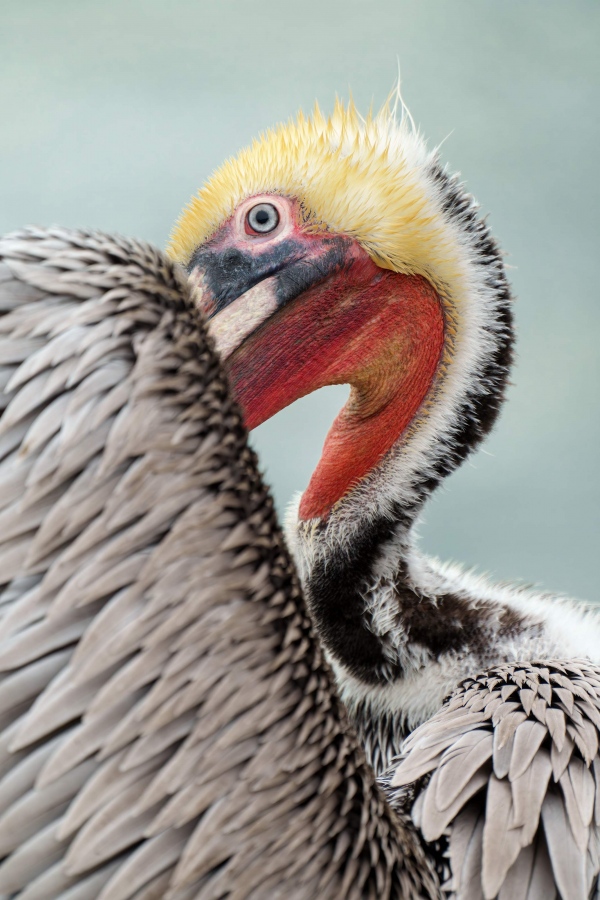

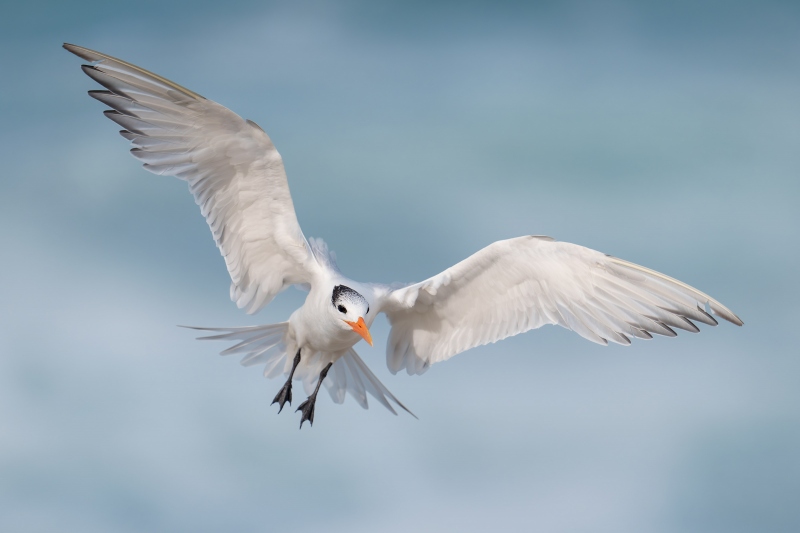
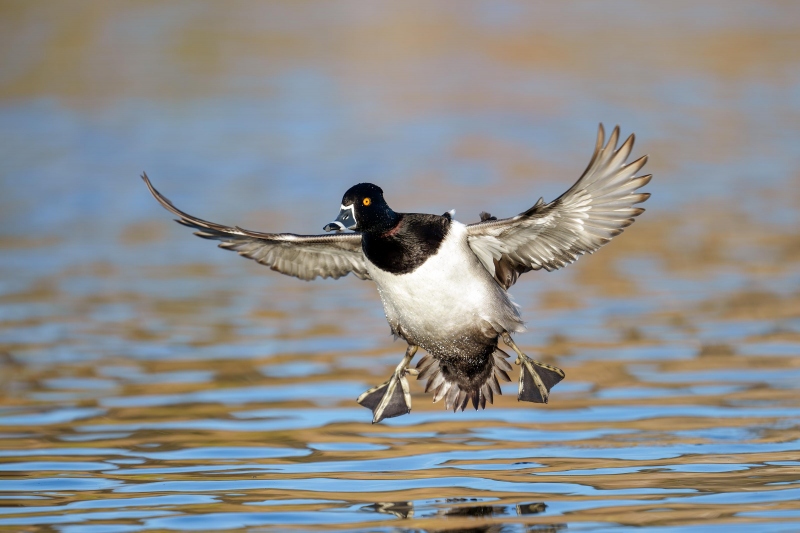
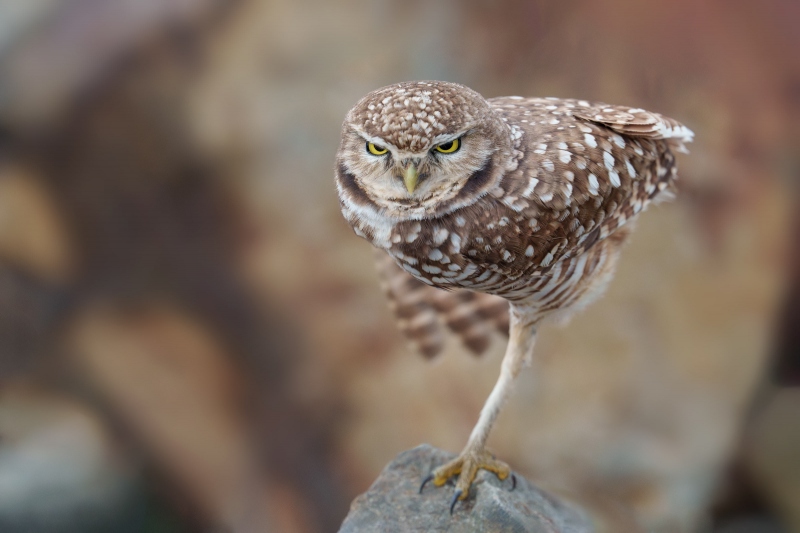
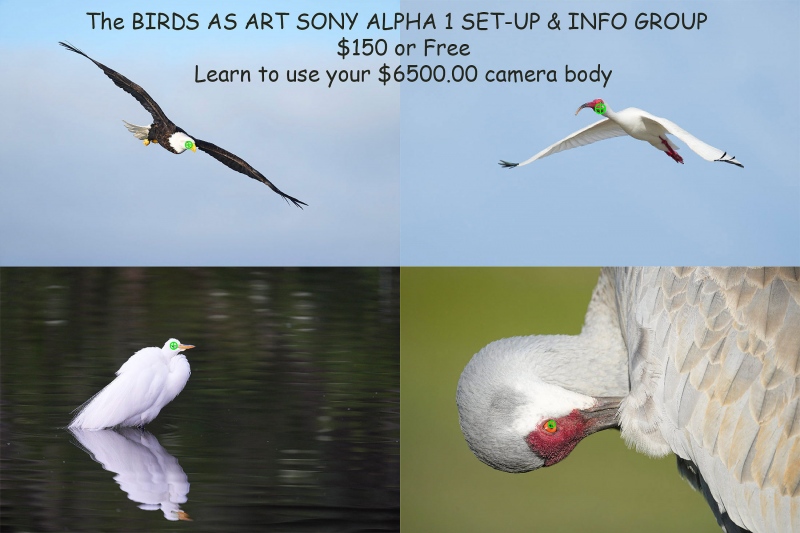
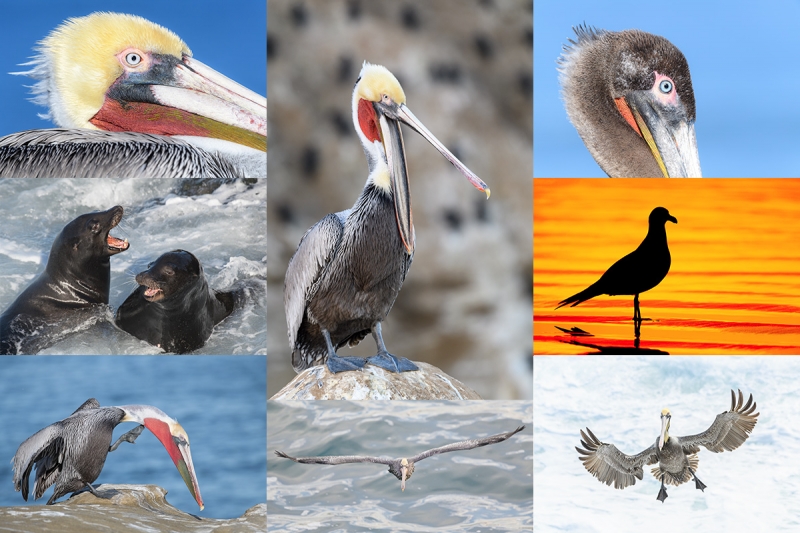
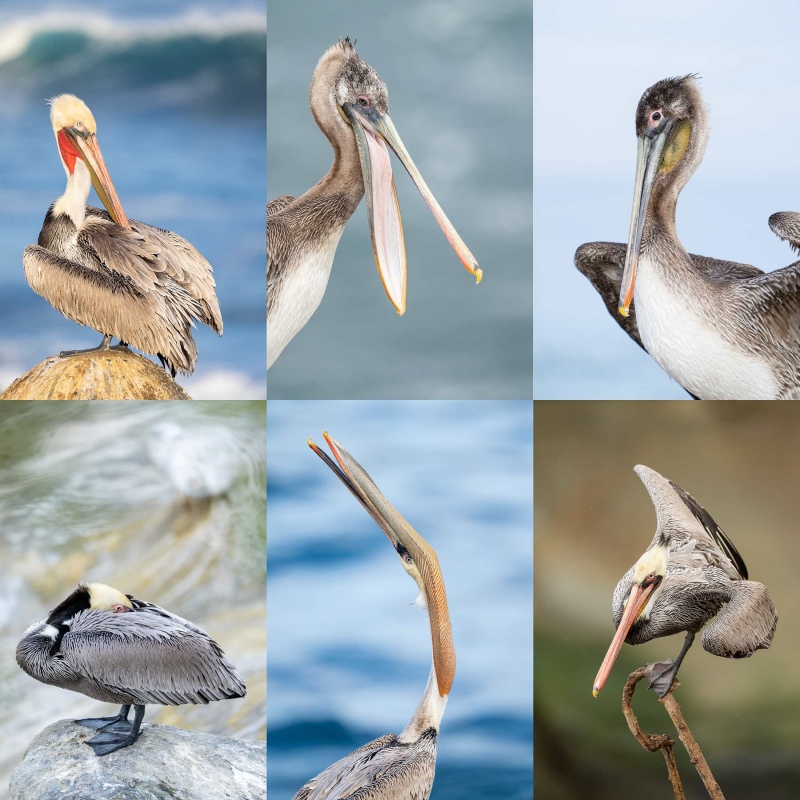
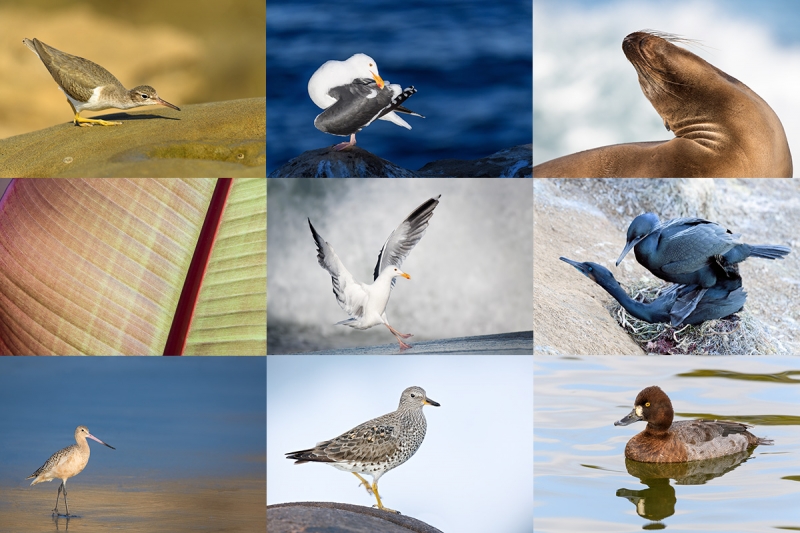















A late vote for Image 2, the Brandt’s Cormorant. The OOF surf seems the perfect background for the blue eyes and iridescent gular pouch.
And a timely thanks for your comment!
with love, a
My favorite image is that of the brown pelican because I love the pose and the composition and the colors. The other photographs look great too. The owl photograph is my second favorite. I love all the light browns and tans.
I think the answer to your sun angle question is: The catch light in the bird’s eye is at about 9:00 to the pupil, indicating that the sun angle is to the left of the optical axis. I am not positive but I think there might also have been a thin shadow on the right wing of the bird (the left wing in the image) had the sun been coming over your head–a shadow cast by the body of the bird?
Thanks, John. I love the pelican too. As for the sun angle question, I never look at the eye highlights. And I think that you might have the bird’s wings confused. The shadow is on the wing on our left, which is the bird’s right wing.
See David’s comment below.
with love, artie
Hi Artie; I was looking at image #4 rather than image #3. Oops! David’s comment (which I saw after posting mine) makes a lot more sense now!
Best,
John
My fav = the tern. Lovely light, great background, wonderful position of the bird. One of one of my favorite places to shoot.
Franks, Thank!
a
Hi, Artie. The pelican is my favorite and I agree all five are great. I like the pose and composition and color. You can tell the sun angle on the tern because the shadow of its head is on its left wing, ergo the sun was behind you to your left. Sorry about the Mets. As a Red Sox fan I have to root for the Dodgers against the Yankees, and I think the Dodgers are the only team in baseball that might beat them. I think you’ll agree that the two best teams are in the World Series, which is a good thing.
Thanks times five, Dr. Fish. I will probably be rooting for the Yankees while marveling at Ohtani. I am still a bit pissed at the Dodgers, “Them Bums,” for leaving Brooklyn before the 1958 season. I guess I hold a grudge as that was 66 years ago!
with love, artie
ps: I hated the Yankees when the used to beat the Dodgers in the World Series when I was a tot. Until 1955, of course. When the Yankees became less dominant, I began to root for them. But the Mets have long been my favorite team.